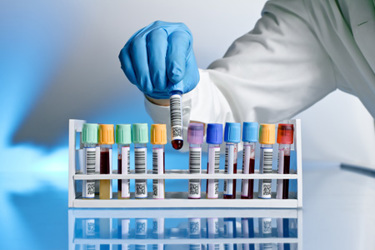Immunophenotyping Of Normal Whole Blood Using A 12-Color BD Horizon™ Chroma Research Panel On The BD FACSDuet™ Premium Sample Preparation System Integrated With The BD FACSLyric™ Flow Cytometer
By Farzad Oreizy, Angela Chen, Bao Nguyen, Chih-Hung Lai, Punam Roka, Beverly Lu, Yang Zeng

Traditional flow cytometry workflows typically involve numerous manual processing steps, such as pipetting multicolor reagent cocktails, washing, staining, and lysing. These steps require substantial hands-on time and become increasingly complex as the number of parameters increases. The BD FACSDuet™ Premium Sample Preparation System, combined with the BD FACSLyric™ Flow Cytometer, has demonstrated the ability to reduce error-prone tasks and minimize the hands-on time needed for dataset acquisition. Additionally, BD Horizon™ Chroma Reagents offer pre-aliquoted, multicolor cocktails in a dried, ready-to-use format, which are customizable and have an extended shelf life.
In this study, a fully automated workflow utilizing the BD FACSDuet™ Premium Sample Preparation System integrated with the BD FACSLyric™ Flow Cytometer was assessed and compared to manual processing. The system was used to prepare and analyze twenty normal whole blood samples stained with a 12-color BD Horizon™ Chroma Research Dried Panel. System setup and compensation were carried out using BD® CS&T Beads, BD® FC Beads, and batch-matched dried single-color reagents from BD. The BD FACSDuet™ Premium Sample Preparation System automated the process by rehydrating the dried reagent cocktail, prewashing the whole blood, transferring the blood to the rehydrated reagent tube, performing a stain/lyse/wash step, and automatically transferring the samples to the BD FACSLyric™ Flow Cytometer. The immunophenotyping and characterization of T-cell and B-cell subsets were executed, and the automated and manual sample processes were compared and analyzed statistically. Continue reading to explore the results of the study.
Get unlimited access to:
Enter your credentials below to log in. Not yet a member of Cell & Gene? Subscribe today.
